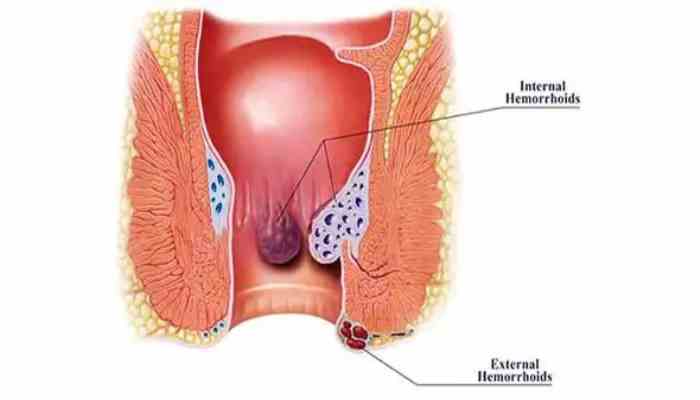How Long Should You Rest After Pile Removal?
Just as it sounds, pile removal is a specialized surgical procedure for removing painful and troublesome hemorrhoids, commonly known as piles. Hemorrhoids are swollen veins in the rectal and anal areas that cause discomfort, bleeding, and persistent pain. Read more about piles on this page: https://gastrohealth.com.sg/are-colon-polyps-a-cause-for-concern/.
Now, you may be recommended piles removal if you’ve already tried conservative treatments like dietary changes, medications, or non-invasive therapies without a lasting relief. This procedure is usually performed through a hemorrhoidectomy.
It is done to excise the problematic tissue so that symptoms are reduced and quality of life is improved. If done correctly, you should experience a significant decline in pain and bleeding after piles removal.
These changes will then allow for easier bowel movements and a more comfortable daily routine. Other notable benefits include improved personal hygiene, a reduction in recurring flare-ups, and an overall boost in well-being.
But, how long should you rest after piles removal? Please, stay on this page to find out.
How Many Days Rest Is Needed After Piles Surgery?
After any surgery, you will need to allow your body ample time to heal. So, it is understandable if you’re considering piles removal and the question that’s constantly bugging you is; how many days rest is needed after piles surgery?
Now, after piles removal, you will most likely be recommended a rest period of one to two weeks immediately following the operation. During these first one to two weeks, you are encouraged to stay at home and avoid any strenuous activities.
Heavy lifting, intense exercise, and even routine activities that strain the abdominal area should be avoided during this time. The initial recovery phase is critical because the surgical site is very sensitive and prone to irritation
You may experience pain in the anal area, which incidentally is common. Also, many patients experience discomfort for two to four weeks after the surgery.
To manage this pain, you will be prescribed over-the-counter pain relievers. Please, only take these pain relievers as recommended by your doctor.
This will be key in maintaining your comfort as you heal. In addition to rest, gentle movement is important during the early stages of recovery.
While complete bed rest is not necessary, you should avoid any heavy or vigorous activities that could disrupt the healing process. It will help to move slowly and only engage in light activities that do not put pressure on the surgical area.
Your body will signal when it is ready for more activity. It is important to listen to these cues. To maintain circulation without compromising your recovery, we’d recommend taking short walks or performing simple stretches.
Another key aspect of recovery is the prevention of constipation. After pile removal, straining during bowel movements can cause complications.
So, your doctor will likely suggest stool softeners and a high-fiber diet. This dietary adjustment, combined with an increased intake of fluids, can ease bowel movements and prevent undue pressure on the healing tissue.
Sitz baths, which involve sitting in warm water for 15 to 20 minutes several times a day and especially after bowel movements can also help. These baths not only help to soothe discomfort.
They also help ensure cleanliness in the affected area, which is key if you’re keen on reducing your risks of infection. Beyond the initial one to two weeks, a gradual return to normal activities should now be on the cards.
Many patients can resume everyday tasks and even return to work within this timeframe if their job does not require heavy physical exertion. However, it is important to note that everybody is different.
This is why you will want to build up your activity level slowly. If you work at a desk, make sure to take frequent breaks, stand, and stretch to avoid putting too much pressure on the surgical site.
You may also want to use a cushion or donut pillow when sitting to get some relief by reducing direct pressure on the area. We’d like to mention that while many patients feel well enough to resume their normal routines within one to two weeks, full healing can extend to four to eight weeks.
During this period, you should continue to follow your doctor’s advice carefully. Any complications, such as infection or excessive bleeding, may require a longer recovery period.
What Not to Do After Piles Surgery?
Once you’ve began your recovery, you do not want anything that will slow it down or cause complication. This is the reason why many people frequently search online; what not to do after piles surgery.
Now, there are a few activities and habits you must avoid to ensure proper healing and reduce the risk of complications after pile removal. Key among these activities and habits include;
- Heavy Lifting: Engaging in heavy lifting can place excessive strain on your abdominal muscles and the surgical area. It is important to let your body heal without the added pressure that heavy lifting causes. When you lift heavy objects, you may inadvertently increase blood flow to the area. This can cause bleeding or even a reopening of the surgical site.
- Straining During Bowel Movements: Straining puts undue pressure on the healing tissues. It may also disrupt the surgical repairs. To avoid constipation after surgery, you will need to take stool softeners and maintain a high-fiber diet. When you strain, the pressure on the anal region can cause undue pain and potentially set back your recovery. Therefore, it is important to adopt dietary and lifestyle measures that promote smooth bowel movements.
- Spicy/Greasy Foods: You do not want to consume spicy or greasy foods after pile removal as these foods can irritate the digestive system. This side effect may lead to discomfort during recovery, which is unpleasant. Such foods might also cause digestive disturbances, which can increase the likelihood of constipation and straining. If you can avoid spicy/greasy foods you will significantly reduce the risk of inflammation and irritation in the gastrointestinal tract.
- Prolonged Sitting: Sitting for long periods puts continuous pressure on the surgical area after pile removal. As you’d imagine, this can delay healing. That said, it is recommended to take frequent breaks if you must sit for extended periods, such as during desk work. Prolonged sitting can increase discomfort and may lead to swelling or irritation in the affected area. While you can use a cushion or donut pillow to reduce pressure, it is best to minimize the time spent sitting continuously.
Do Piles Go Away Permanently After Removal?
Having piles isn’t a pleasant experience. So after your surgery you may also want to ask; do piles go away permanently after removal?
To begin with, the surgical procedure itself effectively removes the problematic hemorrhoidal tissue. However, it does not guarantee that hemorrhoids will never return.
Nonetheless, many people enjoy long-term relief after a successful surgery, especially if they adopt healthy lifestyle practices moving forwards. You will want to stick to a balanced diet, stay hydrated, and manage your weight.
Wrapping Up
Pile removal offers a significant fix to those dealing with painful and persistent hemorrhoids. While full recovery may take several weeks, adhering to your doctor’s instructions can help you to prevent complications and promote long-term health.
If you are considering pile removal or need expert advice on post-operative care, do not hesitate to reach out. If you’re in Singapore, please contact our clinical care center today for a personalized consultation. Details below;
Gastrohealth Clinic @ Gleneagles – Dr Bhavesh Doshi | Gastroscopy | Colonoscopy | Health Screening | EUS and ERCP Singapore
6A Napier Rd, #05-35C Gleneagles Hospital Annexe Block, Singapore 258500
Phone: +65 6355 5773







